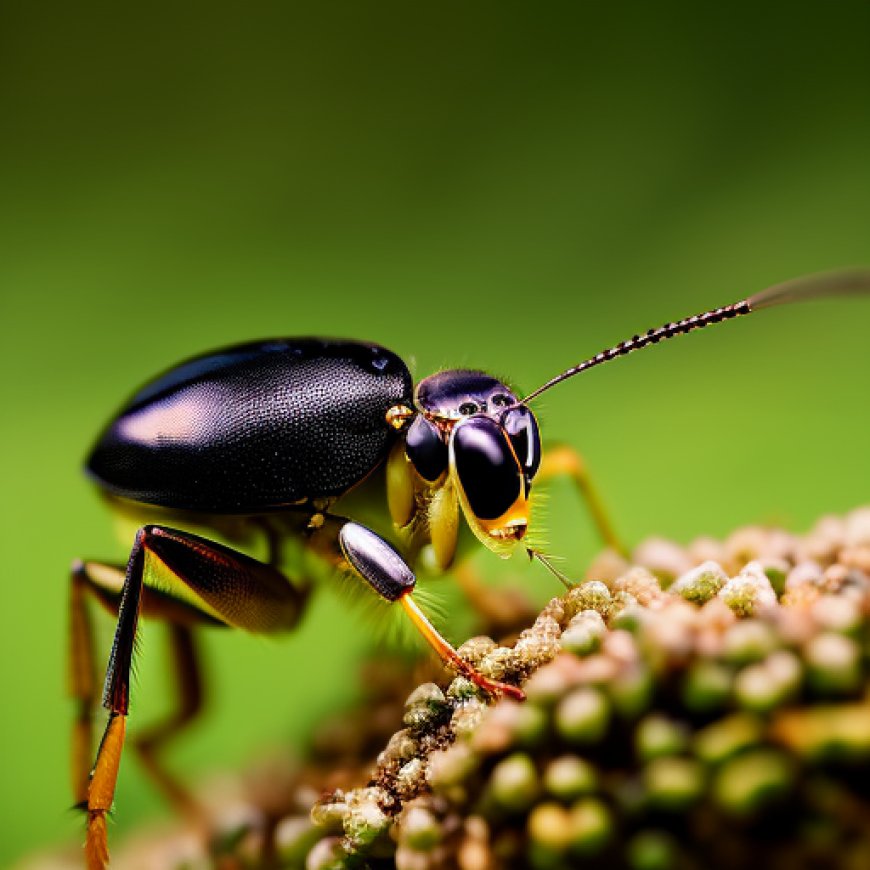Beneficial insects support agriculture, protect environments | Cornell Chronicle
Beneficial insects support agriculture, protect environments | Cornell Chronicle Cornell Chronicle


Sustainable Development Goals and the Importance of Insects

Introduction
There are an estimated 10 quintillion insects (that’s 10 plus 17 zeroes) on planet earth and, with the exception of our beloved pollinators, they get mostly bad press: Mosquitoes that spread malaria, ticks that cause Lyme disease, and invasive pests that devastate forests, gardens and crops. But it’s not just the bees we couldn’t live without. In addition to pollinating flowers and farmlands, beneficial insects help control agricultural pests and are critical in maintaining balanced natural ecosystems. Roughly 80 percent of the world’s species are insects, making them the most diverse group of animals in our world.
The Importance of Insects for Sustainable Development Goals
“Certainly, those of us who work in agriculture and agricultural research spend considerable time trying to control and manage pests, but the truth is that without insects, our global food systems and ecosystems would collapse,” said Margaret Smith, professor of plant breeding and genetics and director of the Cornell University Agricultural Experiment Station (Cornell AES). “Most bird and amphibian species would go extinct without insects to eat, leading to food web consequences that would harm ecosystems and agriculture. More immediately, without birds and insects, many of our food crops that rely on external pollination would disappear. Cornell AES supports a growing body of research focused on how beneficial insects bolster environmental resources and human wellbeing, and on understanding how we can better use their ‘services’ to enhance our agricultural systems.
Research Projects and Agricultural Management Practices
Here, we explore just a few of the research projects and agricultural management practices that seek to support and benefit from the power of bugs. They include:
- Pollinators and Soybeans: Efforts to coax soybeans into achieving higher yields with the help of pollinators.
- Controlling Invasive Water Chestnut: Progress on introducing a leaf beetle that could help control invasive water chestnut.
- Insects in Greenhouses: Use of insects in greenhouses to control other destructive pests while minimizing pesticide sprays.
All of these projects rely on Cornell AES’ controlled-environment plant growth facilities, and their experienced greenhouse staff.
SDGs, Targets, and Indicators
-
SDG 2: Zero Hunger
- Target 2.4: By 2030, ensure sustainable food production systems and implement resilient agricultural practices that increase productivity and production, that help maintain ecosystems, that strengthen capacity for adaptation to climate change, extreme weather, drought, flooding and other disasters and that progressively improve land and soil quality.
- Indicator 2.4.1: Proportion of agricultural area under productive and sustainable agriculture.
-
SDG 15: Life on Land
- Target 15.1: By 2020, ensure the conservation, restoration and sustainable use of terrestrial and inland freshwater ecosystems and their services, in particular forests, wetlands, mountains and drylands, in line with obligations under international agreements.
- Indicator 15.1.1: Forest area as a proportion of total land area.
Analysis
The article highlights the importance of insects in maintaining balanced natural ecosystems and supporting global food systems. Based on the content of the article, the following SDGs, targets, and indicators can be identified:
1. SDG 2: Zero Hunger
The article emphasizes the critical role of insects in pollinating flowers and farmlands, which is essential for the production of food crops. Without insects, many food crops that rely on external pollination would disappear. This aligns with SDG 2, which aims to achieve zero hunger by ensuring sustainable food production systems.
Targets:
- Target 2.4: By 2030, ensure sustainable food production systems and implement resilient agricultural practices that increase productivity and production, that help maintain ecosystems, that strengthen capacity for adaptation to climate change, extreme weather, drought, flooding and other disasters and that progressively improve land and soil quality.
Indicators:
- Indicator 2.4.1: Proportion of agricultural area under productive and sustainable agriculture.
2. SDG 15: Life on Land
The article highlights the importance of insects in maintaining balanced natural ecosystems and protecting environments. Insects play a crucial role in controlling agricultural pests and are essential for the survival of bird and amphibian species. This aligns with SDG 15, which aims to protect, restore, and promote sustainable use of terrestrial ecosystems.
Targets:
- Target 15.1: By 2020, ensure the conservation, restoration and sustainable use of terrestrial and inland freshwater ecosystems and their services, in particular forests, wetlands, mountains and drylands, in line with obligations under international agreements.
Indicators:
- Indicator 15.1.1: Forest area as a proportion of total land area.
Table: SDGs, Targets, and Indicators
| SDGs | Targets | Indicators |
|---|---|---|
| SDG 2: Zero Hunger | Target 2.4: By 2030, ensure sustainable food production systems and implement resilient agricultural practices that increase productivity and production, that help maintain ecosystems, that strengthen capacity for adaptation to climate change, extreme weather, drought, flooding and other disasters and that progressively improve land and soil quality. | Indicator 2.4.1: Proportion of agricultural area under productive and sustainable agriculture. |
| SDG 15: Life on Land | Target 15.1: By 2020, ensure the conservation, restoration and sustainable use of terrestrial and inland freshwater ecosystems and their services, in particular forests, wetlands, mountains and drylands, in line with obligations under international agreements. | Indicator 15.1.1: Forest area as a proportion of total land area. |
Copyright: Dive into this article, curated with care by SDG Investors Inc. Our advanced AI technology searches through vast amounts of data to spotlight how we are all moving forward with the Sustainable Development Goals. While we own the rights to this content, we invite you to share it to help spread knowledge and spark action on the SDGs.
Fuente: news.cornell.edu

Join us, as fellow seekers of change, on a transformative journey at https://sdgtalks.ai/welcome, where you can become a member and actively contribute to shaping a brighter future.







